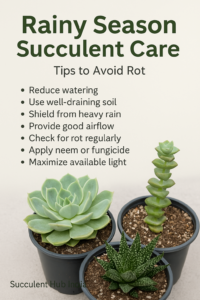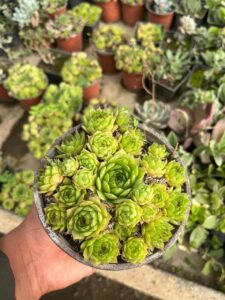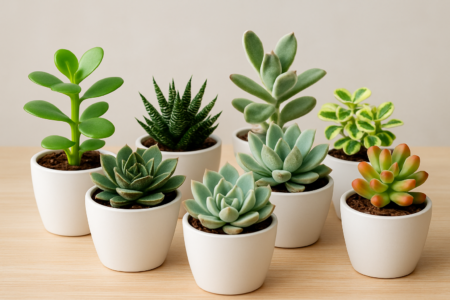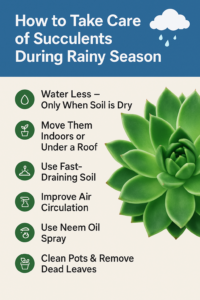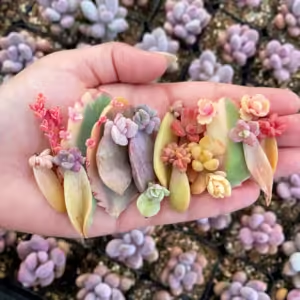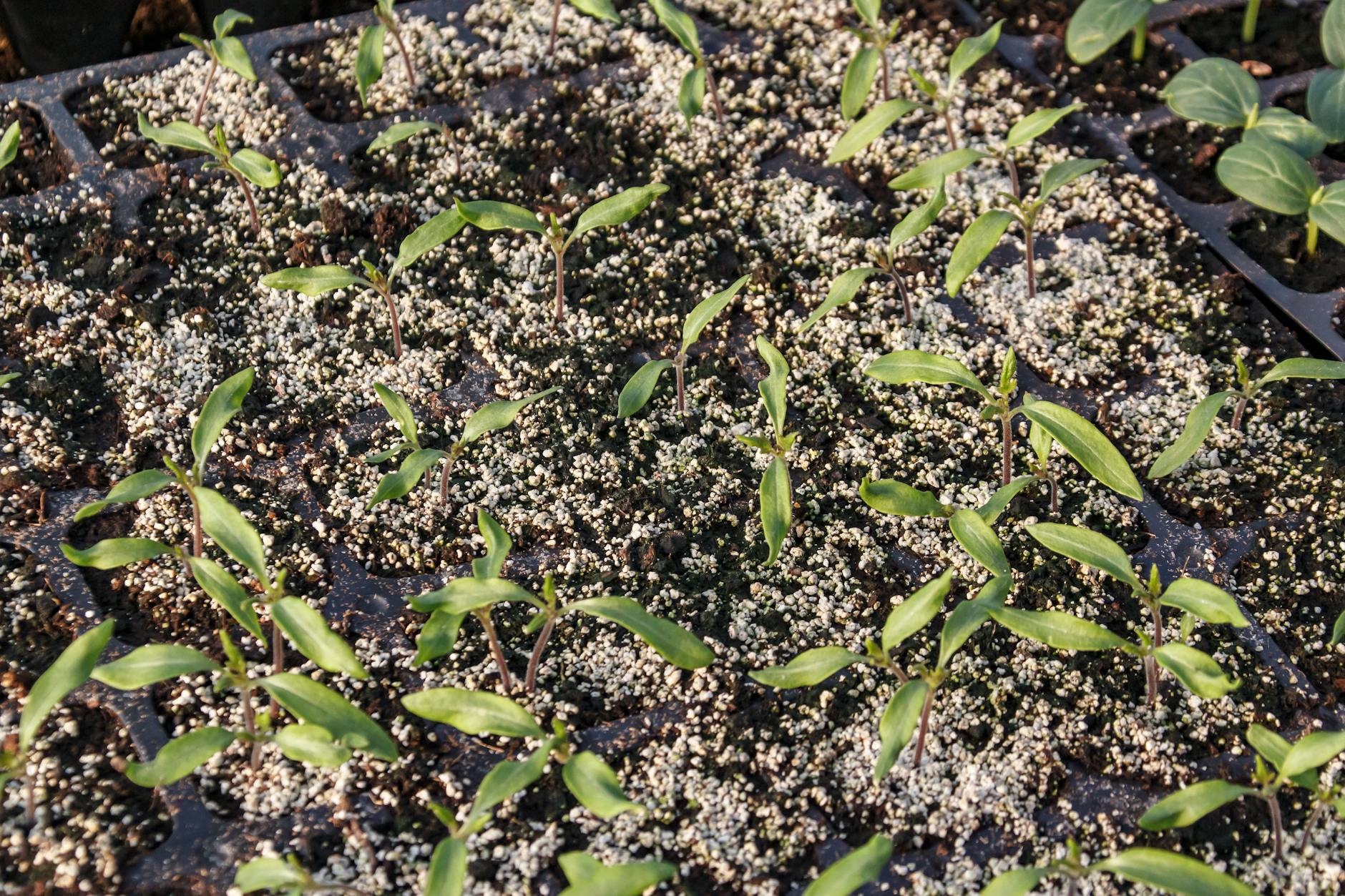
Are you struggling to keep your beloved succulents alive and thriving? 🌵 The secret to success might be right under your plants – in the soil! Many succulent enthusiasts overlook the crucial role that proper soil mix plays in the health and growth of these unique plants.
Imagine creating the perfect environment for your succulents, where they can flourish and display their stunning colors and shapes. The right soil mix is the foundation for achieving this dream. But with so many options and conflicting advice out there, how do you know what truly works? Don’t worry – we’ve got you covered!
In this comprehensive guide, we’ll dive deep into the world of succulent soil mixes. From understanding the specific needs of these desert dwellers to exploring the best organic and inorganic components, we’ll uncover everything you need to know. Whether you’re a DIY enthusiast or prefer ready-made solutions, we’ll help you find the perfect soil mix for your succulents. So, let’s dig in and discover how to give your succulents the solid foundation they deserve!
Understanding Succulent Soil Needs

A. Drainage requirements
Proper drainage is crucial for succulent health. These plants have adapted to survive in arid environments, making them highly susceptible to root rot when exposed to excess moisture. A well-draining soil mix ensures that water doesn’t linger around the roots, mimicking their natural habitat.
To achieve optimal drainage:
- Use a coarse-grained soil mix
- Incorporate inorganic materials like perlite or pumice
- Avoid compacting the soil
- Ensure pots have drainage holes
| Soil Type | Drainage Rate | Suitability for Succulents |
|---|---|---|
| Sandy | Fast | Excellent |
| Loamy | Moderate | Good with amendments |
| Clay | Slow | Poor, needs major changes |
B. Nutrient composition
Succulents thrive in nutrient-poor soils, contrary to many other plants. A soil mix that’s too rich can lead to weak, leggy growth and increased susceptibility to pests and diseases.
Key nutrients for succulents:
- Nitrogen (N): Low amounts for controlled growth
- Phosphorus (P): Moderate levels for root development
- Potassium (K): Higher levels for overall plant health
C. pH balance
The ideal pH range for most succulents is slightly acidic to neutral, typically between 6.0 and 7.0. This range allows for optimal nutrient uptake and promotes healthy growth.
Factors affecting soil pH:
- Water quality
- Organic matter decomposition
- Fertilizer use
- Environmental conditions
To maintain the right pH, regularly test your soil and make adjustments as needed using pH-altering amendments like lime (to raise pH) or sulfur (to lower pH).
D. Aeration importance
Proper aeration is essential for succulent root health. Well-aerated soil allows roots to breathe, promotes beneficial microbial activity, and prevents water logging.
Benefits of good soil aeration:
- Encourages strong root development
- Enhances nutrient uptake
- Prevents anaerobic conditions that lead to root rot
- Facilitates gas exchange between roots and atmosphere
To improve soil aeration, incorporate materials like:
- Perlite
- Pumice
- Coarse sand
- Crushed granite
These materials create air pockets in the soil, allowing roots to access oxygen and preventing compaction.
Now that we understand the crucial soil needs of succulents, let’s explore the essential components that make up an ideal succulent soil mix.
Essential Components of Succulent Soil Mix

Inorganic materials
When it comes to creating the perfect soil mix for succulents, inorganic materials play a crucial role. These materials provide essential structure and drainage, preventing water retention that can be detrimental to succulent health. Let’s explore some of the best inorganic components for your succulent soil mix:
- Perlite
- Pumice
- Coarse sand
- Gravel or small pebbles
- Turface (calcined clay)
| Material | Benefits | Recommended Ratio |
|---|---|---|
| Perlite | Improves aeration, lightweight | 20-30% |
| Pumice | Enhances drainage, retains some moisture | 15-25% |
| Coarse sand | Improves drainage, adds weight | 10-20% |
| Gravel | Enhances drainage, prevents soil compaction | 5-10% |
| Turface | Improves water retention and nutrient holding capacity | 10-15% |
These inorganic materials create air pockets in the soil, allowing roots to breathe and preventing water from stagnating around the roots.
Organic materials
While inorganic materials are essential, organic components also play a vital role in nourishing your succulents. These materials provide nutrients and help retain just enough moisture for healthy growth. Here are some organic materials to consider:
- Coco coir
- Pine bark fines
- Compost
- Worm castings
- Peat moss (use sparingly)
Organic materials should be used in moderation, as succulents prefer a well-draining mix. Too much organic matter can lead to water retention and root rot.
Ideal ratios for optimal growth
Creating the perfect succulent soil mix is all about finding the right balance between inorganic and organic materials. A general rule of thumb for an ideal succulent soil mix is:
- 70-80% inorganic materials
- 20-30% organic materials
This ratio ensures excellent drainage while still providing necessary nutrients. However, you may need to adjust these ratios based on your specific succulent species and local climate conditions.
For example, if you live in a humid area, you might want to increase the proportion of inorganic materials to improve drainage further. Conversely, in arid regions, you might slightly increase the organic content to help retain moisture.
Now that we’ve covered the essential components of a succulent soil mix, let’s move on to explore the best inorganic materials in more detail. These materials form the foundation of your succulent’s growing environment, ensuring they thrive in their potted homes.
Organic Materials to Enhance Succulent Soil
Coco coir benefits
Coco coir, derived from coconut husks, is an excellent organic material for enhancing succulent soil. Its unique properties make it a valuable addition to your succulent mix:
- Water retention: Coco coir can hold up to 10 times its weight in water, providing a consistent moisture level for your succulents.
- Aeration: Despite its water-holding capacity, coco coir maintains good aeration, preventing root rot.
- pH neutral: With a pH of around 6.0-6.8, coco coir is suitable for most succulents.
- Eco-friendly: As a renewable resource, coco coir is an environmentally conscious choice.
Here’s a comparison of coco coir with other organic materials:
| Property | Coco Coir | Peat Moss | Pine Bark Fines |
|---|---|---|---|
| Water retention | High | Very high | Moderate |
| Aeration | Good | Poor | Excellent |
| pH | Neutral | Acidic | Slightly acidic |
| Sustainability | High | Low | Moderate |
| Nutrient content | Low | Low | Moderate |
Peat moss pros and cons
Peat moss, while commonly used in gardening, has both advantages and disadvantages when it comes to succulent soil:
Pros:
- Excellent water retention
- Lightweight and easy to mix
- Helps prevent soil compaction
Cons:
- Acidic pH (3.5-4.5) may not suit all succulents
- Can become hydrophobic when dry
- Non-renewable resource with environmental concerns
When using peat moss in your succulent soil mix, consider the following:
- Use in moderation to avoid excessive moisture retention
- Mix with lime to balance the pH if necessary
- Combine with inorganic materials for better drainage
Pine bark fines advantages
Pine bark fines, small pieces of shredded pine bark, offer several benefits for succulent soil mixes:
- Excellent drainage: The irregular shape of pine bark fines creates air pockets in the soil, promoting drainage.
- Slow decomposition: Pine bark fines break down slowly, maintaining soil structure over time.
- Mild acidity: With a pH of 5.5-6.5, pine bark fines can help balance alkaline soils.
- Natural pest resistance: The aromatic compounds in pine bark may deter some pests.
To maximize the benefits of pine bark fines in your succulent soil mix:
- Use a combination of fine and medium-sized particles for optimal soil structure
- Mix with inorganic materials like perlite or pumice for enhanced drainage
- Consider the natural habitat of your succulents when determining the proportion of pine bark fines to use
When incorporating these organic materials into your succulent soil mix, remember to balance them with inorganic components for optimal drainage and aeration. The right combination will depend on your specific succulent species and growing conditions. Experiment with different ratios to find the perfect mix for your plants.
DIY Succulent Soil Mix Recipes
Basic mix for most succulents
Creating your own succulent soil mix is not only cost-effective but also allows you to tailor the blend to your plants’ specific needs. For most succulents, a basic mix that provides excellent drainage and aeration is ideal. Here’s a simple recipe that works well for a wide variety of succulents:
| Ingredient | Proportion |
|---|---|
| Potting soil | 3 parts |
| Coarse sand | 2 parts |
| Perlite or pumice | 1 part |
To prepare this mix, simply combine the ingredients in a large container and mix thoroughly. This blend offers a good balance of water retention and drainage, crucial for succulent health.
Soil mix for drought-tolerant species
For succulents that are particularly adapted to arid conditions, such as certain cacti or desert-dwelling species, a mix with even better drainage is beneficial. This recipe focuses on inorganic materials to mimic their natural habitat:
- 2 parts coarse sand
- 2 parts perlite or pumice
- 1 part cactus potting mix
- 1 part small gravel or crushed granite
This mix allows water to pass through quickly, preventing root rot in drought-tolerant succulents. The high proportion of inorganic materials also helps to stabilize larger, top-heavy plants.
Blend for humidity-loving succulents
Not all succulents thrive in extremely dry conditions. Some species, particularly those native to tropical or subtropical regions, appreciate slightly higher humidity and moisture retention. For these plants, try the following mix:
- 2 parts potting soil
- 1 part coconut coir
- 1 part perlite
- 1/2 part fine bark chips
This blend retains more moisture than the previous recipes while still providing adequate drainage. The coconut coir helps to retain humidity, while the bark chips add organic matter and improve soil structure.
When creating these DIY soil mixes, it’s essential to use high-quality ingredients. Avoid using garden soil or sand from beaches, as these can introduce pests or diseases to your succulents. Instead, opt for sterile, commercial potting mixes and materials.
Remember that these recipes are starting points. You may need to adjust the proportions based on your specific plants and growing conditions. Observe your succulents closely after repotting in a new mix, and don’t hesitate to make changes if you notice signs of stress or poor growth.
By creating your own succulent soil mixes, you’re taking an important step in providing the best possible care for your plants. With these recipes in hand, you’re well-equipped to create the perfect growing medium for your succulent collection, whether you’re cultivating drought-tolerant desert dwellers or more moisture-loving tropical species.
Commercial Succulent Soil Options
Pre-made mixes pros and cons
When it comes to succulent soil, commercial options can be a convenient choice for many gardeners. Let’s explore the advantages and disadvantages of pre-made mixes:
| Pros | Cons |
|---|---|
| Convenience | May not suit all succulent types |
| Consistent quality | Can be more expensive |
| Time-saving | Limited customization options |
| Balanced nutrition | May contain unnecessary additives |
| Ready to use | Potential for overwatering if not well-draining |
Pre-made mixes offer a quick and easy solution for succulent enthusiasts. They’re formulated to provide adequate drainage and nutrients, making them ideal for beginners or those with limited time. However, they may not always meet the specific needs of every succulent species.
Top brands to consider
While there are many commercial succulent soil options available, some brands stand out for their quality and reputation. Here are a few top choices:
- Bonsai Jack Succulent and Cactus Soil
- Miracle-Gro Cactus, Palm & Citrus Potting Mix
- Black Gold Cactus Mix
- Hoffman Organic Cactus and Succulent Soil Mix
- rePotme Cactus and Succulent Soil Mix
Each of these brands offers a well-draining mix designed to support healthy succulent growth. It’s worth noting that while these are popular choices, the best soil for your succulents may vary depending on your specific plants and growing conditions.
Customizing store-bought mixes
While pre-made mixes can be excellent starting points, customizing them can help create the perfect soil for your succulents. Here are some ways to modify store-bought mixes:
- Add more grit: Incorporate additional perlite, pumice, or coarse sand to improve drainage.
- Enhance organic content: Mix in small amounts of compost or worm castings for added nutrients.
- Adjust pH: Use lime to raise pH or sulfur to lower it, depending on your succulents’ needs.
- Incorporate slow-release fertilizers: Add small amounts of specialized succulent fertilizers for long-term nutrition.
When customizing, it’s crucial to maintain a balance that promotes good drainage while providing adequate nutrients. Start with small adjustments and observe how your succulents respond before making significant changes.
Now that we’ve explored commercial succulent soil options, it’s important to remember that different succulent types may have varying soil requirements. In the next section, we’ll delve into soil mix considerations for different succulent species, helping you fine-tune your approach for optimal plant health.
Creating the perfect soil mix for succulents is crucial for their health and growth. By combining the right proportions of inorganic materials like perlite, pumice, and coarse sand with organic components such as coco coir or peat moss, you can provide your succulents with the well-draining, nutrient-rich environment they need to thrive. Whether you choose to make your own DIY mix or opt for a commercial blend, understanding the specific needs of different succulent types will help you tailor your soil composition for optimal results.
Remember, the key to successful succulent care lies in replicating their natural habitat conditions. By using a well-balanced soil mix and maintaining proper watering practices, you’ll create an ideal foundation for your succulents to flourish. Experiment with different soil combinations and observe how your plants respond to find the perfect mix that works best for your unique collection of succulents.

